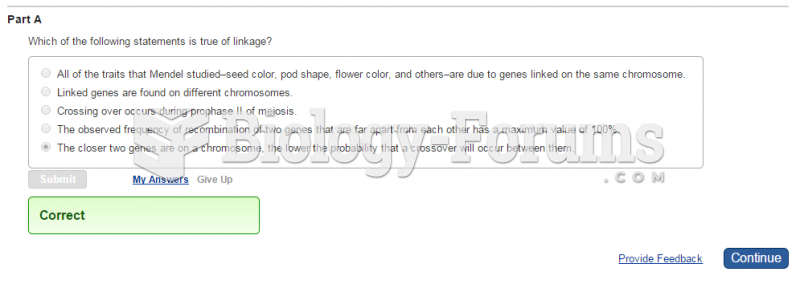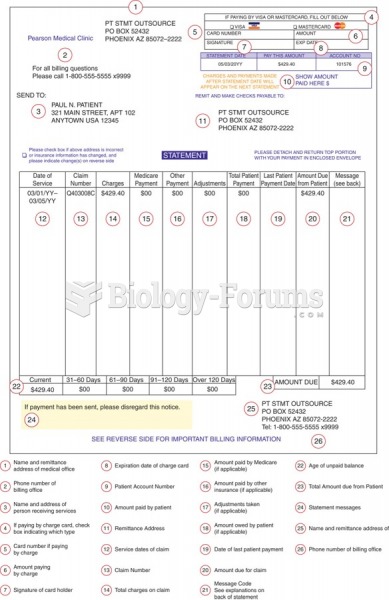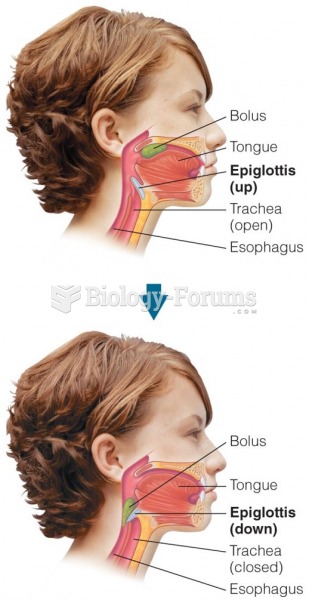|
|
|
If all the neurons in the human body were lined up, they would stretch more than 600 miles.
Increased intake of vitamin D has been shown to reduce fractures up to 25% in older people.
More than 30% of American adults, and about 12% of children utilize health care approaches that were developed outside of conventional medicine.
There can actually be a 25-hour time difference between certain locations in the world. The International Date Line passes between the islands of Samoa and American Samoa. It is not a straight line, but "zig-zags" around various island chains. Therefore, Samoa and nearby islands have one date, while American Samoa and nearby islands are one day behind. Daylight saving time is used in some islands, but not in others—further shifting the hours out of sync with natural time.
Elderly adults are living longer, and causes of death are shifting. At the same time, autopsy rates are at or near their lowest in history.







